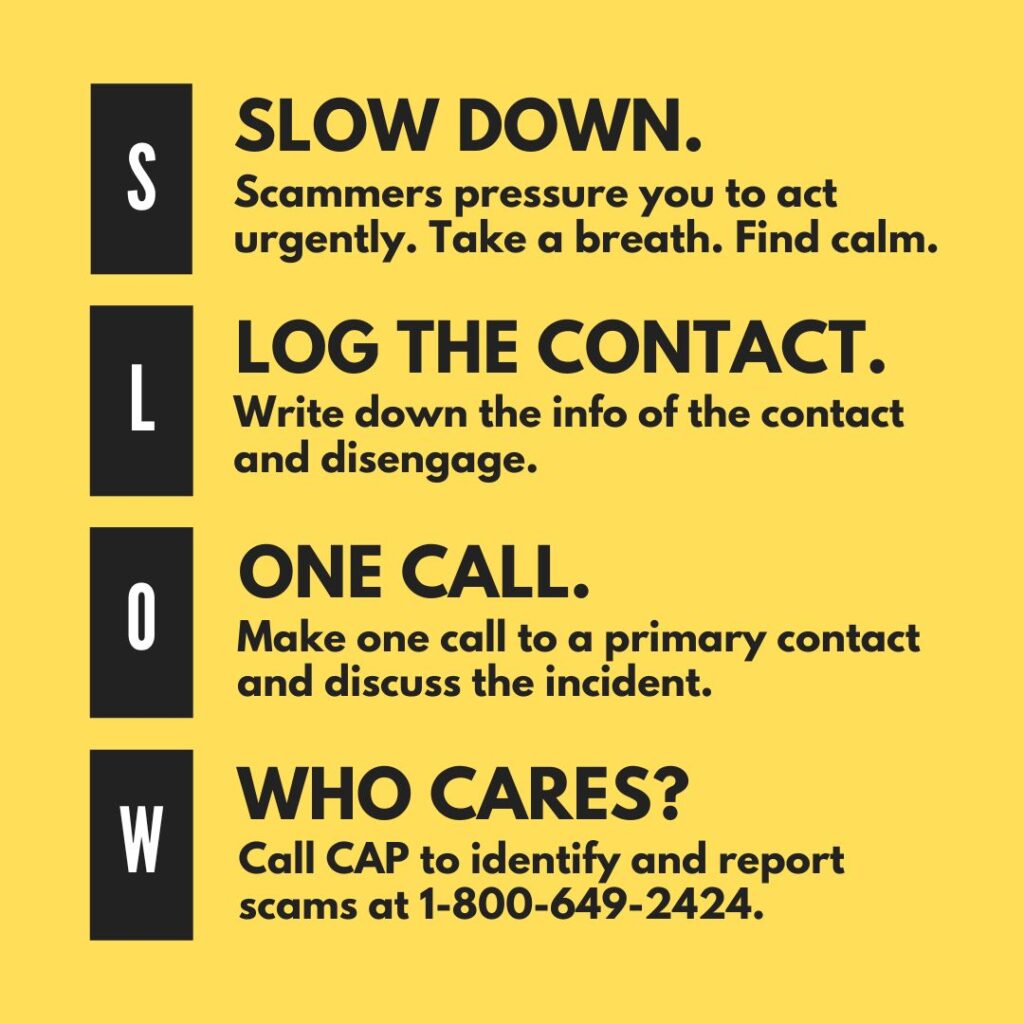For scam interactions and consumer transactions generally, you can apply the SLOW method to disrupt the unpredictable reaction response you are likely to experience by substituting a planned response instead. At the onset of the first communication, start with SLOW as a strategy to help you take steps to verify.

S – Slow down – scammers pressure you to react urgently. Don’t! Instead, take a breath and find your calm by doing what is immediately natural to you.
L – Log the contact – write down the information of the email, or phone call. If they are on the phone, you can tell them you will call them back, even if you don’t intend to. Then, disengage.
O – One call – make one call to a primary contact, such as a friend or family member and discuss the incident. It works best if you have pre-established who this will be; someone you can trust no matter what. The contact is a sounding board, who will ask questions and help you get curious about the interaction. Some questions might include:
How do I know the contact is who they say they are? –What proof is there? Where can I verify their contact information that is not part of the communication I received? –Was my credit card charged? What other parties can I contact that might know more about this? How can I be sure this is not a scam?
W – Who cares? Contact another party or organization in your life who cares. The Consumer Assistance Program (CAP) can help you identify scams and report them: 1-800-649-2424 and ago.vermont.gov/cap
In the age of the internet and free flowing technology, scammers hope to capitalize at every turn. You can prevent scams by practicing SLOW in all your consumer transactions now—and commit to being a primary contact for others. Everyone can help stop scams by following a scam prevention plan and sharing scam knowledge with your community.
